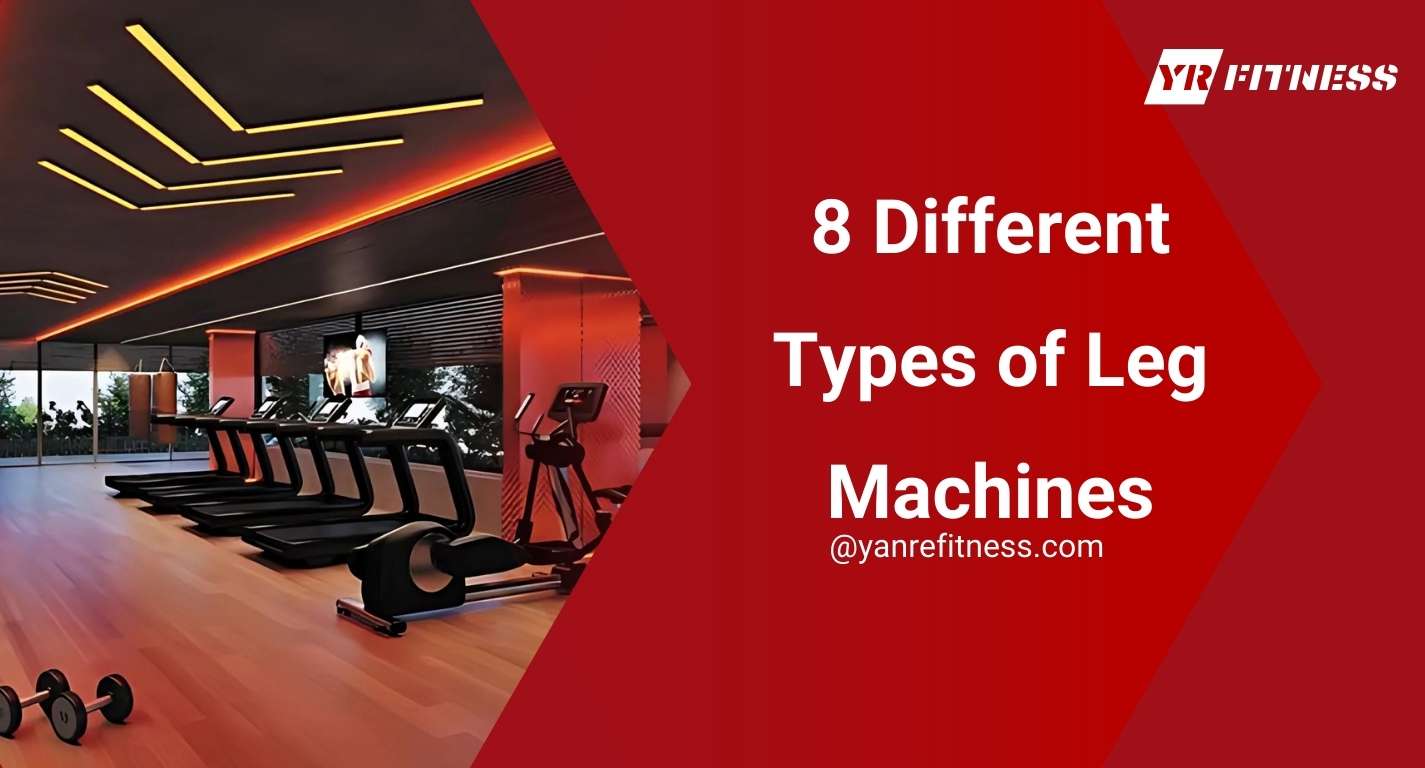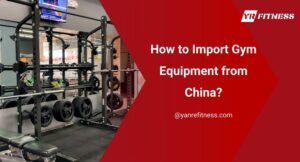Ever wonder which leg machines are essential for your gym? These powerful machines can elevate your fitness space, giving your clients the best lower-body workouts.
As an expert in gym equipment, I know what it takes to build a gym. My knowledge of leg machines will help you make smart decisions that benefit your gym and members.
Here’s a quick preview of the top 2 leg machines that you should have in your gym:
- Leg Press Machines
- Leg Extension Machines
In this guide, you’ll explore the benefits and uses of 8 different leg machines. You’ll also get tips on which machines suit different types of clients and workout styles.
So let’s get down to it!
Table of Contents
1. Quick Comparison Chart
When building lower-body strength, it’s important to choose the right equipment to target specific muscle groups effectively. Each leg machine is designed with unique benefits that contribute to muscle growth and improved performance. Below is a table that compares each type of these machines:
Machine Type | Muscles Targeted | Advantages |
Leg Press Machines | Quadriceps, Hamstrings, Glutes | Provides controlled, stable movement for heavy lifting without the need for balance. |
Leg Extension Machines | Quadriceps | Isolates and strengthens the quadriceps with minimal strain on surrounding muscles. |
Leg Curl Machines | Hamstrings, Calves, Glutes | Focuses on hamstring strength and flexibility while reducing risk of injury from overuse of lower back. |
Calf Raise Machines | Calves (Gastrocnemius, Soleus) | Enhances calf muscle development and endurance with a direct, isolated movement. |
Hack Squat Machines | Quadriceps, Hamstrings, Glutes | Provides a controlled environment for squats, reducing pressure on the lower back and stabilizer muscles. |
Smith Machines | Quadriceps, Hamstrings, Glutes, Calves | Offers versatility for multiple lower body exercises with guided bar path for added safety and balance. |
Leg Abduction and Adduction Machines | Hip Abductors, Adductors | Targets hip and thigh muscles, improving mobility and stability in the lower body. |
Rotary Calf Machines | Calves (Gastrocnemius, Soleus) | Provides a unique rotary motion to fully engage and develop the calf muscles. |
2. Leg Press Machines
Leg press machines are the core in most gyms for building lower body strength, particularly in the quads, hamstrings, and glutes. This machine allows users to perform leg presses in a controlled and safe environment without putting excess strain on the lower back. It’s a great option for those looking to add serious leg power without relying on free weights.
Types
- 45-Degree Leg Press Machine: This machine places the user at an angle, pushing the weight upwards on a sled. It’s the most common type found in gyms, known for reducing pressure on the knees and back.
- Vertical Leg Press Machine: In this type, the user lies on their back and presses the weight directly upward. This design targets the legs in a slightly different way, offering a more intense workout.
- Seated Leg Press Machine: This machine keeps the user seated upright while pushing the weight forward. It’s often considered a more comfortable option for those with lower back issues.
Highlight Features
- Adjustable Backrest and Seat: This design helps users of different heights find a comfortable position. It also helps in targeting specific muscles by changing the angle of the seat.
- Plate-Loaded Resistance: This feature allows users to control how much weight they lift by adding or removing weight plates. It’s simple to use and helps people increase resistance gradually, suitable for all fitness levels.
- Safety Lock System: These locks allow users to set the weight at a resting position quickly if they feel fatigued during a set. Here’s the deal, it adds confidence to users, knowing they can stop safely without assistance.
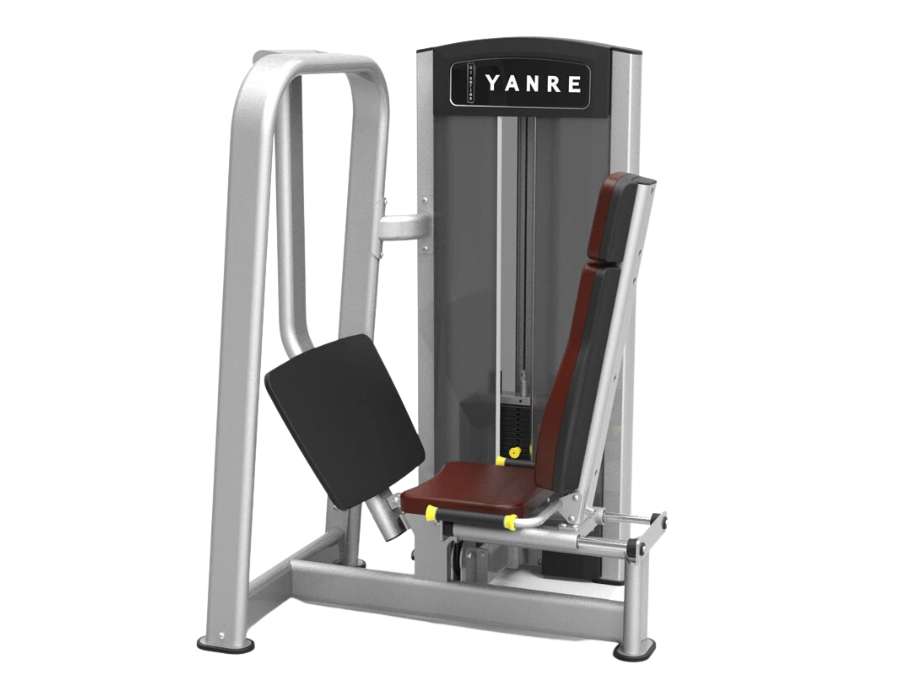
3. Leg Extension Machines
Leg extension machines are perfect for isolating the quadriceps muscles, allowing users to focus solely on strengthening the front of the thighs. This machine is easy to use, making it a favorite for both beginners and seasoned gym-goers. And on top of that, it’s a key tool for improving leg definition and boosting knee strength.
Types
- Standard Seated Leg Extension Machine: This is the most common version, where users sit and extend their legs to lift the weight. It provides an isolated workout for the quads, making it highly effective for muscle definition.
- Plate-Loaded Leg Extension Machine: It gives users more control over the weight load, allowing them to lift more as they gain strength. This type is favored by athletes and advanced users seeking greater challenges.
- Adjustable Angle Leg Extension Machine: This machine offers an adjustable seat angle, allowing users to change their body position slightly. This targets different parts of the quadriceps, offering a more versatile workout.
Highlight Features
- Adjustable Pads: This offers proper positioning for a full range of motion, which is critical for engaging the quads effectively. It also helps reduce strain on the knees by keeping everything aligned.
- Pin-Loaded Weight Stack: The pin-loaded system makes it easy to select the right amount of resistance. Users can change weights quickly between sets, helping them maintain the flow of their workout.
- Ergonomic Seat Design: This ergonomic feature promotes comfort during exercise, even under heavy loads. It also helps users maintain correct posture, which is key to preventing injuries.
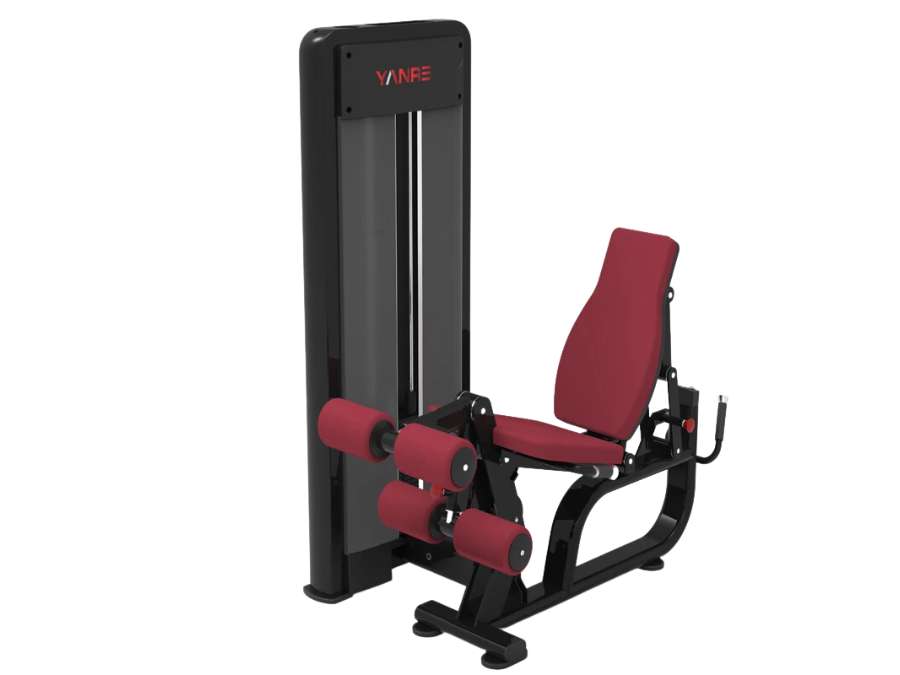
4. Leg Curl Machines
Leg curl machines are designed to target and strengthen the hamstrings, located on the back of the thigh. By isolating this muscle group, the machine helps users develop balanced leg strength. It’s particularly useful for those looking to improve athletic performance or prevent injury by building the often-neglected hamstrings.
Types
- Seated Leg Curl Machine: In the seated version, users sit upright while curling the legs beneath the machine. This design offers more support for the back and is easier for beginners to use.
- Lying Leg Curl Machine: This machine has the user lie flat on their stomach while curling the legs upward. The lying position puts more direct focus on the hamstrings and offers a more intense workout.
- Standing Leg Curl Machine: Thismachine is designed to help users focus on balancing both hamstrings, making it useful for correcting muscle imbalances. It’s also a great option for advanced users looking to add variety to their routine.
Highlight Features
- Padded Lever Arm: The padded lever arm supports the legs comfortably during the curling motion. This padding prevents discomfort and helps maintain proper form throughout the exercise.
- Range of Motion Adjustments: Leg curl machines’ adjustable range-of-motion settings, allow users to customize their workout. This feature helps target hamstrings from different angles, increasing muscle engagement.
- Smooth Resistance Mechanism: The smooth and consistent resistance, is crucial for avoiding sudden jerks during the exercise. Likewise, fluid motion protects the knee joints and hamstrings from strain.
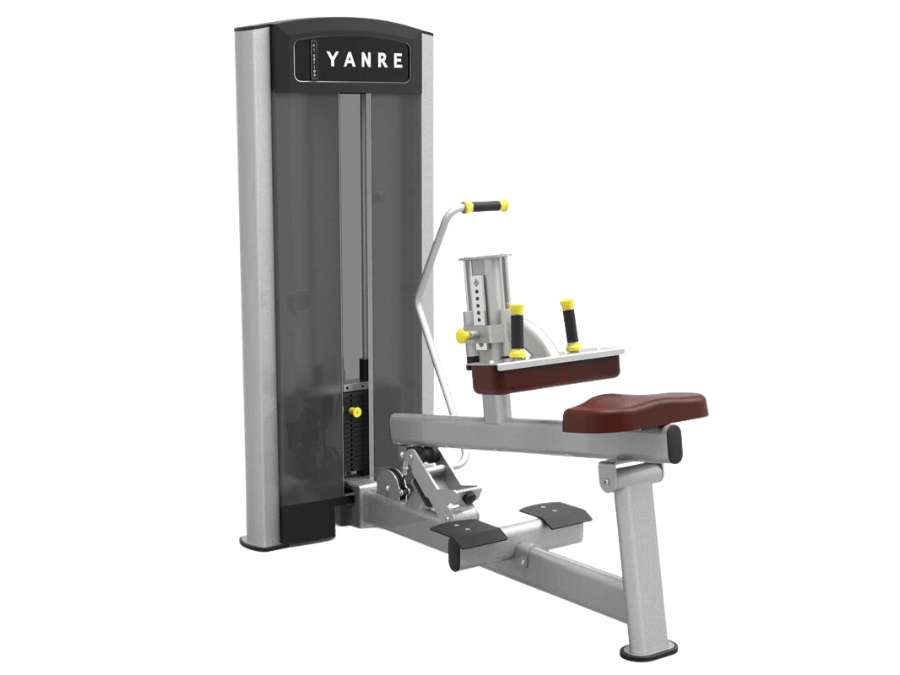
5. Calf Raise Machines
Calf raise machines focus on strengthening the calves, specifically the gastrocnemius and soleus muscles. These machines allow for targeted calf exercises with the benefit of stable positioning and support. They are great for building muscle mass and improving ankle stability, which can help enhance overall athletic performance.
Types
- Standing Calf Raise Machine: This type allows users to stand and perform calf raises with the weight resting on their shoulders. It’s ideal for adding resistance to calf exercises, making it a popular choice for serious lifters.
- Seated Calf Raise Machine: In this version, users sit while performing calf raises with weight loaded on their knees. The best part isthat it targets the soleus muscle more directly, offering a slightly different benefit than the standing version.
- Donkey Calf Raise Machine: This unique design has the user bent forward at the waist, with the weight resting on the lower back. It offers a different angle for calf engagement, often considered more intense.
Highlight Features
- Height Adjustable Foot Platform: This feature allows users to adjust the height of the foot platform, helping them achieve a deeper stretch. A full range of motion during calf raises maximizes muscle engagement, leading to better results.
- Padded Shoulder Support: Standing calf raise machines from YR Fitness include padded shoulder support, which distributes the load evenly. This padding increases comfort while lifting heavier weights.
- Smooth Weight Resistance: These machines are designed to provide consistent resistance throughout exercise. This smooth motion helps prevent strain on the Achilles tendon while allowing users to control their reps better.
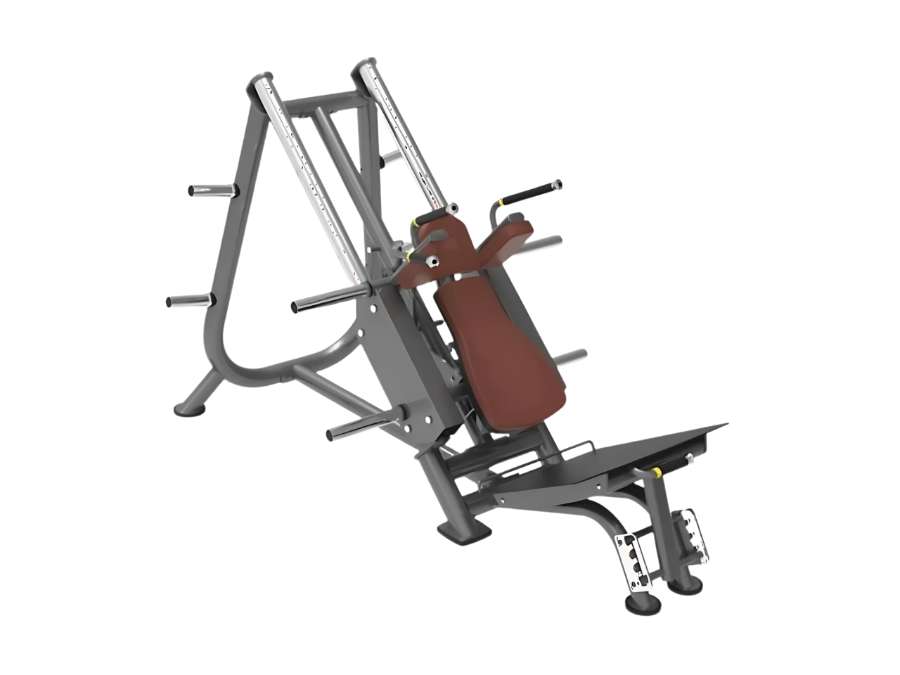
6. Hack Squat Machines
Hack squat machines are designed to target the quadriceps, glutes, and hamstrings through a guided squat movement. These machines provide extra support to users, making squats safer and more controlled, especially when lifting heavier weights. Hack squats are an excellent addition to any gym for clients focused on building lower body strength and muscle mass.
Types
- Traditional Hack Squat Machine: This type has users positioned at an incline, pushing the weight upward along a fixed rail system. It’s the most common version found in gyms, known for providing excellent quad activation.
- Reverse Hack Squat Machine: In this variation, users face the machine, pushing the weight backward instead of upward. This shift in body positioning emphasizes the glutes and hamstrings more than the quads.
- Plate-Loaded Hack Squat Machine: This version uses weight plates for resistance rather than a fixed stack of weights. It allows for a greater range of load, giving users the flexibility to increase or decrease weight easily.
Highlight Features
- Angled Platform: The angled platform positions the body in a way that maximizes quad and glute engagement. This helps users activate their leg muscles more effectively during each rep.
- Guided Rail System: This keeps the user in a fixed motion path, allowing the movement to stay controlled. And you know what? This feature is ideal for beginners and experienced lifters, as it reduces the risk of losing balance.
- Wide Footplate: This gives users the option to change their foot stance, allowing them to target different muscles. A narrow stance focuses more on the quads, while a wider stance engages the glutes and inner thighs.
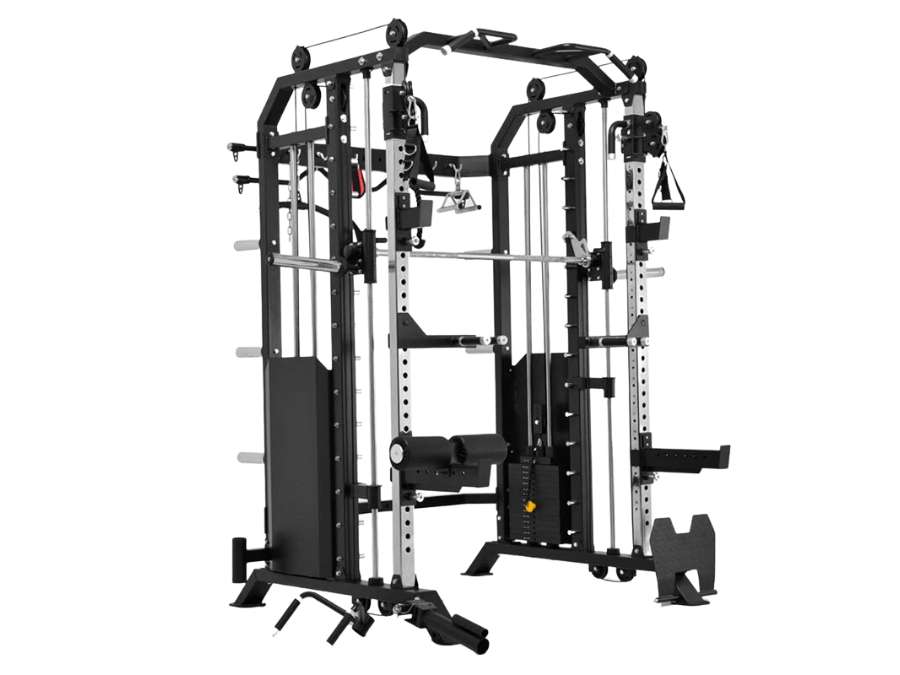
7. Smith Machines
Smith machines are versatile gym machines designed to help users perform a variety of exercises with a fixed barbell. The machine’s guided bar provides controlled movements, reducing the risk of injury while allowing users to lift heavier weights safely. It’s a favorite for gyms with its market size growing at a CAGR of 5.6%as per Verified Market Reports, because of its ability to accommodate fitness levels.
Types
- Vertical Smith Machine: In this type, the barbell moves along a perfectly vertical path. It offers maximum stability and is great for straight-up-and-down exercises, such as squats and presses.
- Inclined Smith Machine: The barbell on an inclined Smith machine moves along a slightly angled path.Here’s the thing, this version is more comfortable for certain exercises, like squats, as it mimics a more natural movement pattern.
- All-in-One Smith Machine: This type combines the traditional Smith machine with other attachments, like a cable crossover or pull-up bar. It offers a complete workout station for users who want to perform multiple exercises without needing separate machines.
Highlight Features
- Fixed Barbell: The barbell moves along a fixed vertical or near-vertical path, providing more stability than free weights. For example, this controlled motion prevents the bar from moving out of place, which is especially helpful for those new to lifting.
- Adjustable Safety Stoppers: Smith machines offered by YR Fitness comes with equipped adjustable safety stoppers that can be set at various heights. This feature allows users to set a “stop point” to catch the barbell in case they can’t complete a rep.
- Counterbalanced Bar: Some Smith machines feature a counterbalanced bar, which reduces the initial weight of the barbell. This feature is perfect for beginners who may find a standard Olympic bar too heavy.
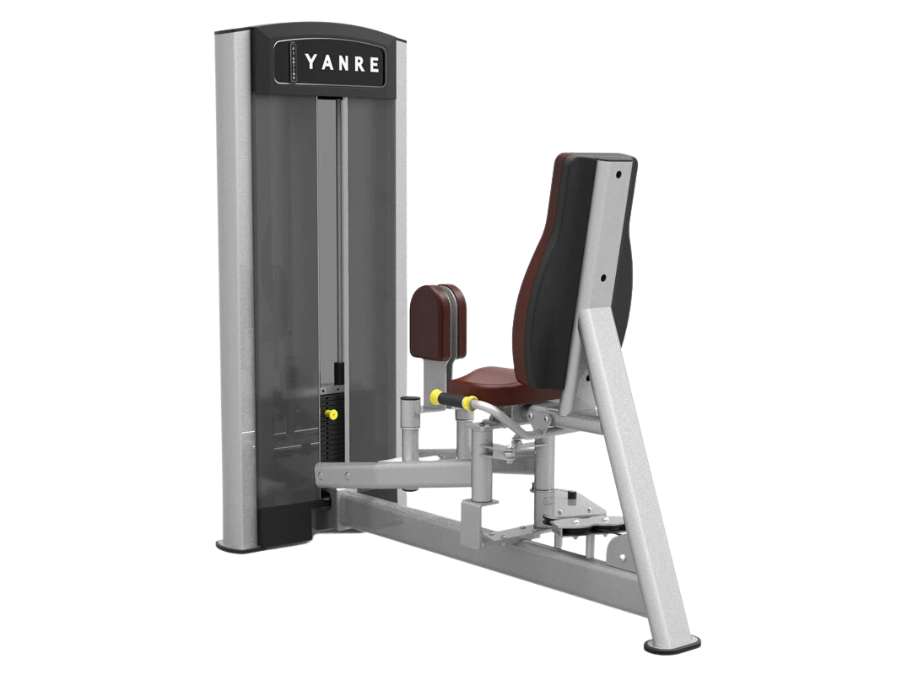
8. Leg Abduction and Adduction Machines
Leg abduction and adduction machines are designed to target the muscles of the inner and outer thighs. These machines work by having users either push their legs outward (abduction) or squeeze them inward (adduction), helping to build strength and stability in these areas. They are useful for improving hip mobility and lower body balance.
Types
- Seated Machine: This is the most common version, where users sit and perform both abduction and adduction exercises. As a matter of fact, the seated position provides full back support, making it easy for users to maintain proper posture.
- Standing Machine: In this version, users stand and use 1 leg at a time to push outward or inward. This type engages the core and stabilizer muscles more than the seated version, offering a more dynamic workout.
- Cable-Based Machine: Some gyms feature cable machines that allow users to perform these exercises using ankle straps. This version offers more versatility in range of motion and allows users to adjust their positioning freely.
Highlight Features
- Dual Functionality: Thesemachines combine abduction and adduction exercises, allowing users to switch between working the inner and outer thighs without leaving the machine. This dual feature saves time and provides a balanced workout.
- Adjustable Resistance Settings: This allows users to increase or decrease the intensity of their workout. This flexibility makes it suitable for beginners and advanced users who want to progressively challenge their muscles.
- Ergonomic Seats and Pads: This ergonomic design reduces strain on the hips and back while providing proper alignment of the legs. Comfortable padding helps users stay focused on their workout without worrying about discomfort.
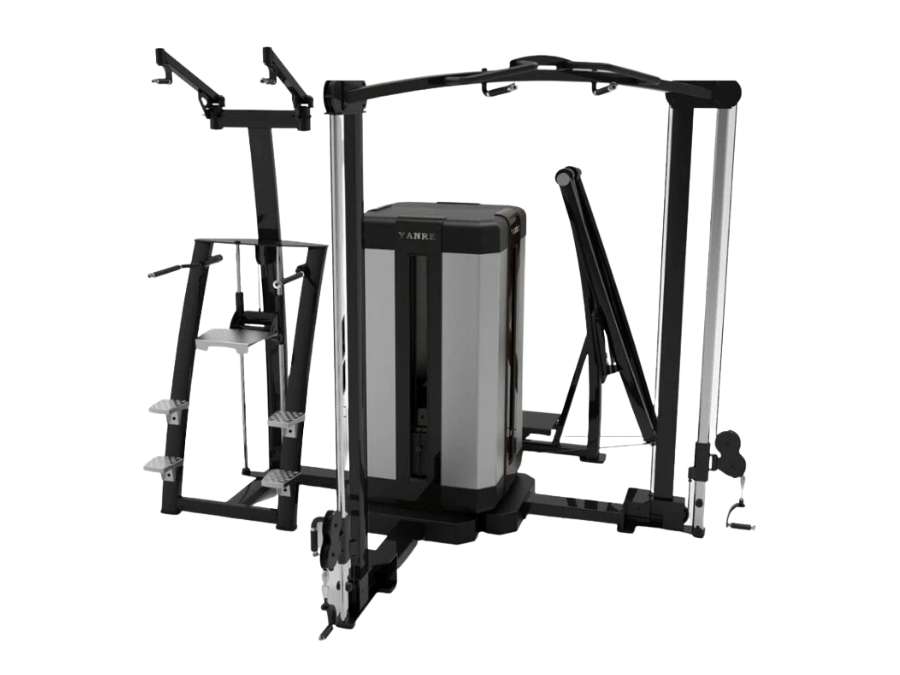
9. Rotary Calf Machines
Rotary calf machines focus on isolating the calf muscles, particularly the gastrocnemius and soleus, through a unique rotating motion. This machine allows users to perform controlled calf raises with consistent resistance, helping to build strength and improve lower leg definition. It’s a great addition to any gym for users who want to focus on calf development without putting pressure on their lower back.
Types
- Seated Rotary Calf Machine: In this version, users sit and push against the rotating footplate to engage their calves. For instance, the seated position provides extra back support, making it easier to focus on calf movement.
- Standing Rotary Calf Machine: The standing version requires users to stand while pushing against the rotating footplate. This version allows for heavier resistance and a greater range of motion, ideal for more advanced users.
- Lever-Based Rotary Calf Machine: This version uses a lever system to apply resistance during the calf raise motion. It offers a smoother and more controlled movement, making it easier for users to perform reps with precision.
Highlight Features
- Rotating Foot Platform: The rotating platform encourages a full range of motion, providing a deep stretch and contraction of the calf muscles. This movement helps engage the muscles more than standard calf raise machines.
- Adjustable Resistance: The resistance on these machines can be easily adjusted. This flexibility allows for gradual progress, helping users to increase strength without overloading their muscles.
- Padded Seat for Comfort: Thesemachines come with a comfortable, padded seat that supports the user’s back and hips. This feature reduces strain on the body while focusing on calf movement. Sounds impressive, right?
Conclusion
When it comes to equipping your gym, having the right leg machines is crucial for offering your clients a full lower-body workout. By choosing the best leg machines, you’re setting up your gym for success and helping your clients reach their fitness goals.
In conclusion, this guide has shown the variety of leg machines essential for a well-rounded gym setup. If you’re looking for high-quality gym equipment, YR Fitness offers reliable and durable leg machines designed to meet your needs. To explore our product range, feel free to contact us for more information.
Dive Deeper Into Our Resources
Looking for more diverse product options? Browse through our handpicked selections:
For some insightful reads, we’ve curated a list of recommended articles just for you:
Still haven’t found what you’re looking for? Don’t hesitate to contact us. We’re available around the clock to assist you.
Related articles:
